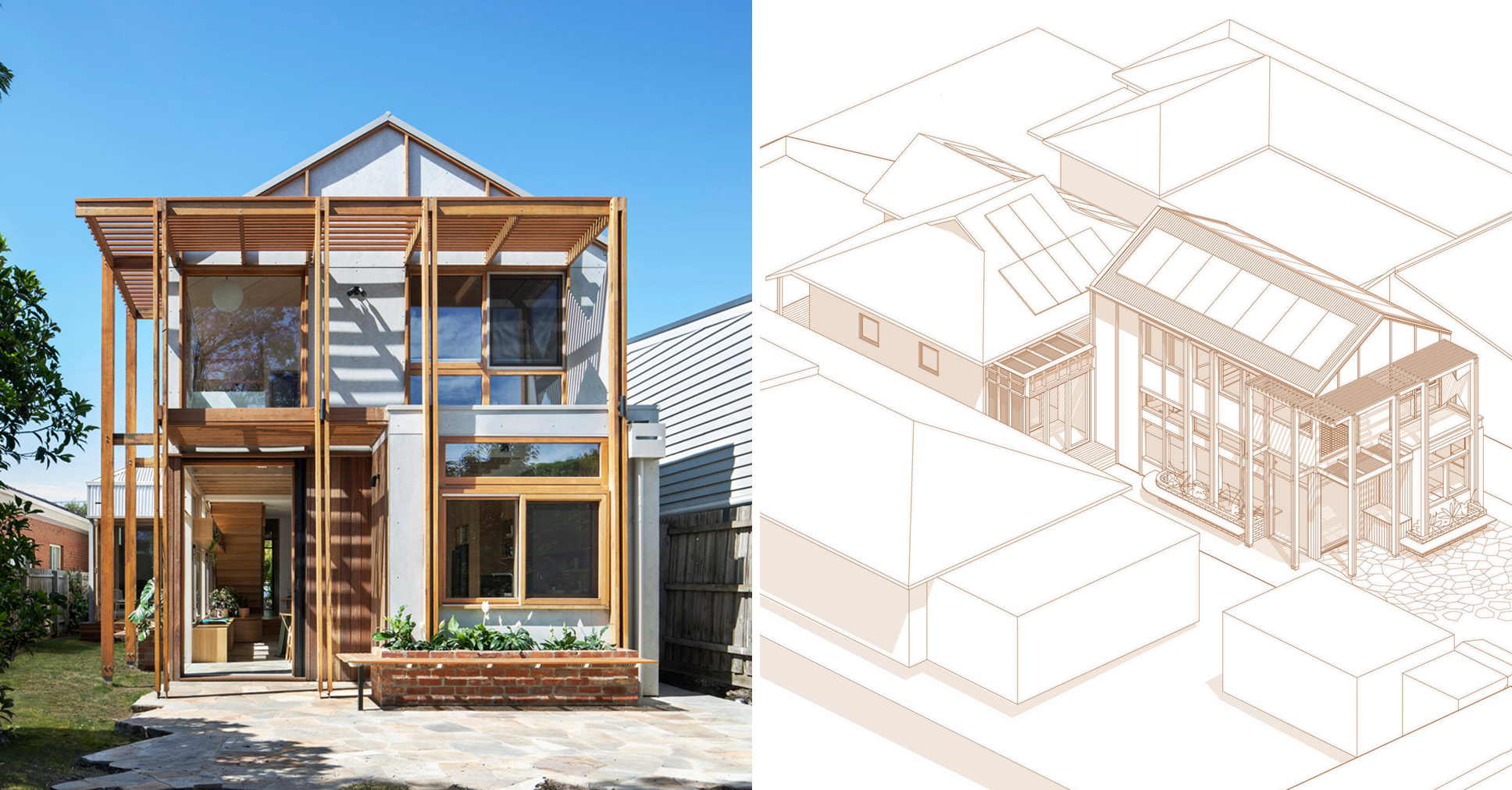Everything that's going wrong with architecture


As part of our Performance Review series, Edwin Heathcote sets out 12 key problems facing the architecture profession.
Collective guilt
Architects, and particularly the younger members of the profession, seem to be profoundly burdened by a sense of guilt. One they struggle to repress.
Construction is tough. It usually involves concrete, pollution and waste. It involves problematic issues around land rights and social inequality, gentrification, demolition, destruction of natural habitat or built legacy.
Architects might blame themselves for all of that. And they would be, at least in part, right. But the collective guilt seems to be gnawing away at the industry's self-confidence.
Waning authority on projects
Design and build contracts – which position the architect as a sub-contractor rather than in the more traditional role of the leader of the team – are now widely used globally. In the UK, they are even used for quite small projects.
The architect's influence has been further fatally undermined by the rise of project managers, who now take on many of the roles that previously gave architects their authority.
It has led to a general impression of impotence, the figure of the architect being bumped ever further down the hierarchy so that the one thing they thought they had – status – has disappeared in the face of much better paid but less well trained consultants and managers.
No political clout
Unlike doctors and lawyers, accountants, social workers and economists, architects are nowhere in the political process. They do not become MPs and the architectural lords (since Richard Rogers at least) do little for their profession, either as tax exiles or inactive members.
Their disengagement from the political process has been damaging. Where there are bits of effective lobbying (often from the political right) it tends to be reduced to aesthetics.

Free and undervalued labour
Call an architect for advice and they will almost certainly give it to you. For free. Maybe they're expecting a job to come of it, maybe they are just decent. Free work upfront is expected, part of the process.
Now try that with a lawyer. Good luck. Every email, every phone call and letter is brutally itemised and billed. That is how you make money. That is how you get taken seriously as a professional.
Meanwhile, the repealing of fee scales and subsequently fee guidance as governments deregulated their economies during the 1980s and '90s now appears a huge mistake.
In some countries, notably the UK, the situation is made worse by the fact that while you need to pay £225 a year to call yourself an architect, the actual function of the architect is unprotected. As a result, it is widely regarded as a luxury add-on, something to make the process more expensive. This is why architects make phone calls for free and lawyers do not.
Architects now regularly undercut each other and bid using unrealistic fees which they know will be made achievable through the exploitation of a pliable workforce.
Exploitation of the workforce
Architects study long and hard to become architects. They have to be dedicated, to really want to do it. This dedication to their trade proves easy to exploit.
Students and young designers are keen to work with big names or fashionable young practices and the price is an expectation of very long hours and often de facto bullying conditions. Possibly only the legal profession is as bad, but at least young lawyers are well paid.
It is only fair to say that for some younger practices working on ridiculously low fees with few project opportunities, this kind of culture is necessary to their survival. They could not otherwise compete.
Nevertheless, it further erodes the moral authority of the profession.
Lack of unionisation
Clearly linked to the above. Architecture is represented by "professional bodies" like the Royal Institute of British Architects or the American Institute of Architects, not unions.
Architects have traditionally seen themselves as an elite too superior for unions. But in his recent book The Labor of Architecture, CG Beck compellingly contends that while architects might see themselves as an elite, above contractors in the pecking order, they are not. In his rather traditional but compelling Marxist interpretation, architects are members of the proletariat, the working classes. While they may not be able to seize the means of production they could at least form a union.
They often earn less than other consultants and contractors, have little agency and a culture of long hours and unpaid labour. Consider too issues of sexism, racism and the legacy of privilege, and it's clear they need unionisation. Now.
Beck managed it in the US with his firm. It can be done.

The preserve of the privileged
Clients are now rarely cities or municipalities as they once were. Now architecture is commissioned by the rich, corporate and private. When I studied, I imagined myself working for a council and designing housing and maybe an occasional library or community centre. By the time I qualified in 1994, there were no such jobs.
The problem is that architecture is itself also increasingly a profession for the rich. Architects emerge blinking from seven years of education into jobs earning less than supermarket managers. Why would anyone study for that long to earn that little? For those who want, or need, to make a decent living from the beginning, it just isn't appealing when set against, say, finance or even law.
You will often find that the most politically radical architects are those from the most comfortable backgrounds, because they can afford to be revolutionaries and not have to compromise with the dirty act of building for other people.
All this breeds a culture in which sexism and racism somehow still abide, however much architecture may think of itself as a liberal profession.
Issues with academia
There has, forever, been a discussion about whether architects' burdensome training is actually useful.
Certainly when we emerge from architecture school, despite seven gruelling years, we are not much use to anyone. Job ads inevitably require three-five years' experience (ie to know anything useful at all).
I'm a little more forgiving. I tend to think that these are the years when a student can use their imagination in a way they might never be able to again, and that is how you learn the one thing that it is impossible to teach – design.
Whether it needs to be that long is moot. Only vets study as long as architects.
There are deeper issues with academia too. Many of the elite schools have become completely divorced from the actual practice of architecture, to the extent that designing a building is seen as ridiculously bourgeois. This is, I suggest, deeply unhealthy. It stems in part from the divide, most notably in the UK, between practice and academia.
Traditionally, young practices and some of the more avant garde architects might have supported themselves through teaching. The academic salary topped up fees from the kind of small or unprofitable projects practices tend to take on when they're starting up.
In the UK, architecture schools now pay so badly that effectively they rely on architects supporting them. With a few exceptions, the big architectural names do not teach. Or at least, they do not teach in the UK. Once architects become successful they concentrate on running their practices.
It is a major loss for academia, because students tend to get taught either by non-practising academics or by young designers without extensive experience.
Architecture schools in the US, Switzerland and much of continental Europe pay serious salaries to attract the best architects. In the US, schools compete for the big architectural stars to attract students. However, this in turn perpetuates the damaging and toxic culture of starchitects.
Stifled innovation
Architecture is at the mercy of a deeply conservative insurance industry, which is resistant to building with anything other than the most familiar materials.
Add to this the building and planning regulations in some countries that entirely discourage innovation and do not even ensure energy efficiency or good quality and you have a system that strips joy or invention from the industry, leaving no spaces in between.
Architects themselves are not blameless. Despite some advances in the acceptance of timber in building, the world's default building material is concrete and it is a problem. Contractors love concrete, clients love concrete and even architects, who really should know better, love concrete. The recent fad for Brutalism exposed the fetish in its full perversion.

The star system
Architecture schools are, astonishingly, still geared to the production of the individual genius.
It is a lonely process, with many hours drawing alone in a bedroom and the obsessive nurturing of self-expression, even where there might be little to express. The brilliant drawing, the beautifully produced publication, the stunning model – these remain the measures through which students achieve distinction.
This obsession with the lone genius is insanely anachronistic and was only ever accurate in the comic-book cultural image. It is the mad Ayn Rand picture of architecture as an expression of the (inevitably male) ego and will.
My impression is that young people are far less interested in this idea of architecture today. There seems to be a more collective notion of what architecture could be, less attached to a single name.
Unedifying company
There is a huge amount of hot air about ethics and politics in architecture. Discussions might touch on issues around indentured labour, repressive regimes, brutal leaders, exploitative dictators or oligarchs.
But ultimately architects will go where clients pay them. Just look at the clearly insane plans for Neom.
The defence might be that we need to engage with other regimes as this will somehow further development and an exchange of views (how has that worked out so far?).
Currently it might be quite reasonable to suggest that working in the US is politically unacceptable, which has kind of undermined the whole argument. None of it paints a pretty picture of ethics in architecture, and accusations of hypocrisy hurt and they stick.
Artificial intelligence
The fading cachet of the architect may be about to get a lot dimmer.
Architects have already enthusiastically adopted artificial intelligence (AI) because they fetishise tech and they dislike, for instance, writing. They are effectively training AI to do the parts of their jobs that should be the most enjoyable: the design, the rendering, the conceptual writing, the drawing. It will leave architects to deal solely with problems on site and negotiations.
Sure, what AI produces is mostly crap, but that is mostly what people want. It is enough.
Edwin Heathcote is an architect and writer who has been architecture and design critic of the Financial Times since 1999. His numerous books on architecture include Monument Builders, Contemporary Church Architecture and the recently released On the Street: In-Between Architecture.
The top photo is by Anders Jildén via Unsplash.

Performance Review
This article is part of Dezeen's Performance Review series interrogating the problems plaguing architecture and design, from difficult working conditions to ethical dilemmas.
The post Everything that's going wrong with architecture appeared first on Dezeen.



















































